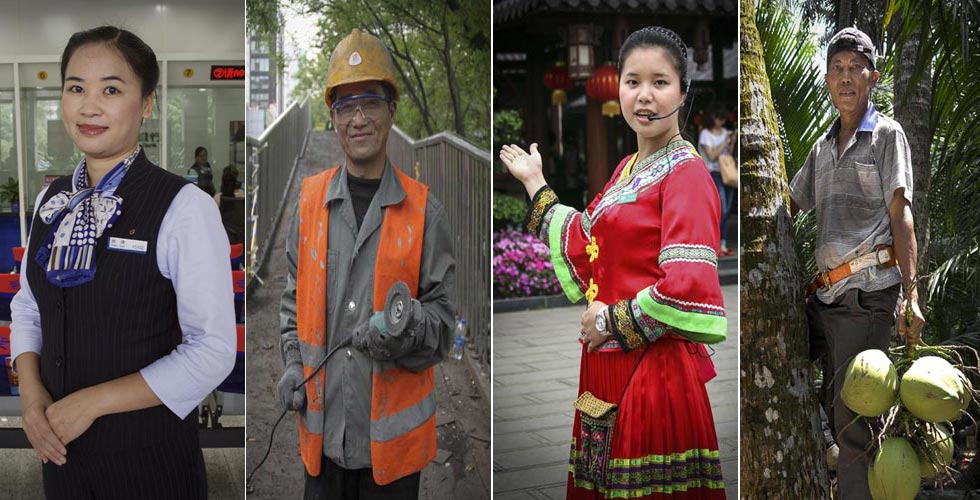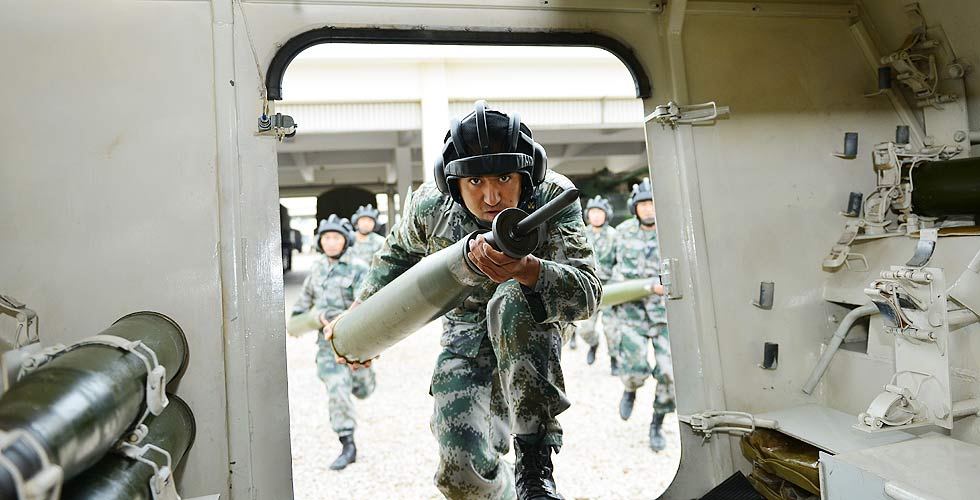More than pandas in Chengdu
Updated: 2014-04-04 14:00
(China Daily)
|
|||||||||||
After touring three scenic cities in China, Michelle Obama, the first lady of the United States, said Chengdu was her favorite.
Obama visited China from March 20 to 26, along with her mother and two daughters.
After visiting Beijing and Xi'an, she arrived in Chengdu, Sichuan province - the last stop of her China tour - on March 24.
"I told my kids that Chengdu is probably the city I would choose to live in if I lived in China," she said in a speech at the Chengdu No 7 Middle School on March 25.
During her trip Obama published her travel journals on the official website of the White House every day to share her experience.
In one of her blogs she talked about her visit to the No 7 Middle School and said it was "an extraordinary high school that uses the power of technology to bring educational opportunities to students across southwest China".
As well as giving a speech, Obama also learnt to practice tai chi and attended an English lesson with local pupils, which was broadcast live to about 18,000 students in 160 schools in China.
"I thoroughly enjoyed my visit to the No 7 School, and I learned a great deal from the terrific students there," she added.
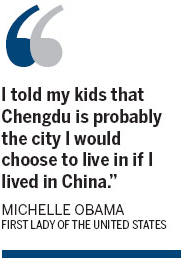
Obama got up close to the lovely pandas at the Chengdu Giant Panda Breeding and Research Center and tasted the renowned Sichuan hotpot in the Kuanzhai Alley area on March 26.
She described her excitement at the panda center in another blog post: "Today is the last day of my trip, and I couldn't leave China without seeing the Chengdu Panda Base."
Her journal entry is combination of her experience at the center and an explanation of China's "panda diplomacy".
"Since the 1950s, China has given pandas to countries like France, Japan, Great Britain, Mexico and the United States. It's a goodwill offering - a way to reach out and build a connection between two countries and their people," she said.
Because of their busy schedule, Obama and her family only visited a small part of Chengdu, a city with a history that stretches back more than 4,000 years and with a reputation as the "land of abundance".
More attractions
In addition to the pandas at the world's largest panda breeding center and unique cuisine in the Kuangzhai Alley, tourists can explore more of the city.
Other attractions include the Thatched Cottage of Du Fu, the Temple of Marquis of Wu, the Jinsha Relics Museum, the Dujiangyan irrigation system, the Qingcheng Mountains and the Anren ancient town.
The Kuangzhai Alley area in the city center also showcases the area's ancient architecture. Streets and residences there were mostly built in the Qing Dynasty (1644-1911). Some buildings combine both traditional Chinese and Western styles, as China began early contact with the Western world in the late Qing.
The Thatched Cottage of Du Fu is the former residence of Du Fu, one of the greatest poets in China. The Tang Dynasty (618-907) poet lived there for nearly four years and created at least 240 works, which are considered national treasures.
The Temple of Marquis Wu was built in the Shuhan Kingdom (221-265) to commemorate Prime Minister Zhuge Liang. A strategist in a time of many big battles, Zhuge is regarded as an incarnation of great wisdom throughout the history.
Chengdu is home to the remains of the Jinsha civilization, which dates back more than 3,000 years. Widely believed to have been the capital of the ancient Shu state, the site is hailed as one of the major archeological discoveries in China in the 21st century.
One of the Jinsha relics unearthed is a gold foil rendering of a divine solar bird. It is now used as the symbol of Chengdu and its local cultural heritage.
Further attractions include the Qingcheng Mountains and the Dujiangyan irrigation system.
Qingcheng has long been recognized as the birthplace of Taoism, China's ancient indigenous religion, while Dujiangyan is considered to be the oldest functioning water-control project in the world.
Easier trips
For international tourists, getting to and from the city is increasingly easy, with a growing number of flights linking it with the rest of the world.
Chengdu is the fourth-biggest air hub in China. Its Shuangliu airport served 71 international routes by the end of last year, ranking first among all airports in China's central and western regions.
A direct air route between the airport and San Francisco is due to start running from June 11. Similar routes are also planned to link Moscow, Paris, Istanbul and Dubai.
Passengers in transit can take advantage of the 72-hour visa exemption, which was put into place in September last year.
The policy allows residents of 51 countries including the United States, Australia, Canada and Japan, with valid visas and flight tickets to a third country to spend three days in the city.
This year the government of Chengdu released further incentives to attract more foreign transit tourists to use the visa-free policy.
These include discounts at hotels and airport shopping areas as well as dedicated transit lounges and free transport between airport terminals.
Dedicated buses take visitors from the airport to popular scenic spots such as the Kuanzhai Alley, Jinli Ancient Street, Jinsha Relics Museum and Temple of Marquis of Wu.
Chengdu reported healthy growth in its tourism industry last year.
Statistics show that the city received 150 million tourists last year, an increase of 28 percent from 2012. Around 1.7 million came from abroad, an increase of 12 percent. Total revenue from tourism surpassed 133 billion yuan ($21.7 billion).
Chengdu ranked third best in tourist facilities, management and services from 60 Chinese cities, according to a customer satisfaction survey released last year.
zhaoshijun@chinadaily.com.cn
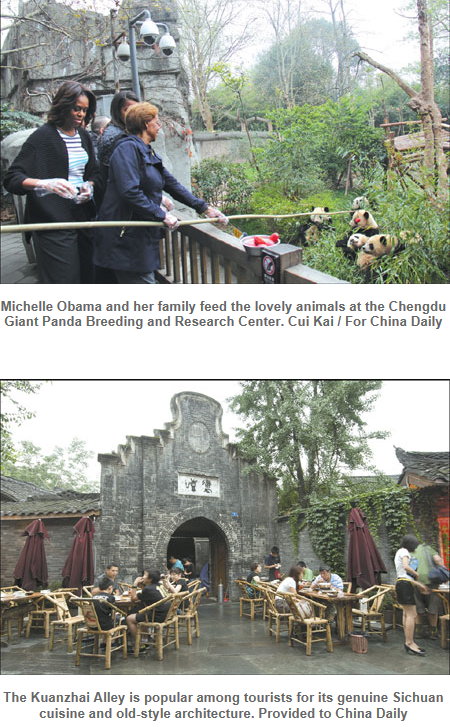
Hot Topics
moon rover air defense identification zone CPC and reform China and Japan air pollution Cameron in China
Editor's Picks
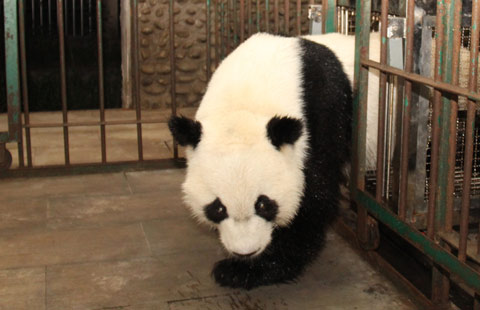
|
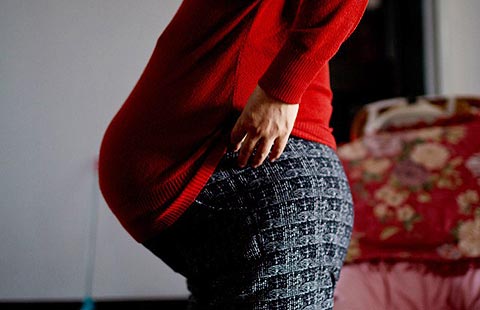
|
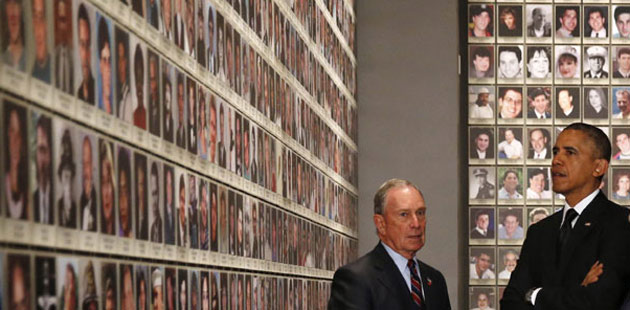
|
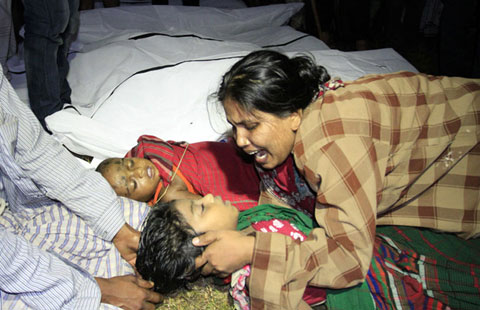
|

|
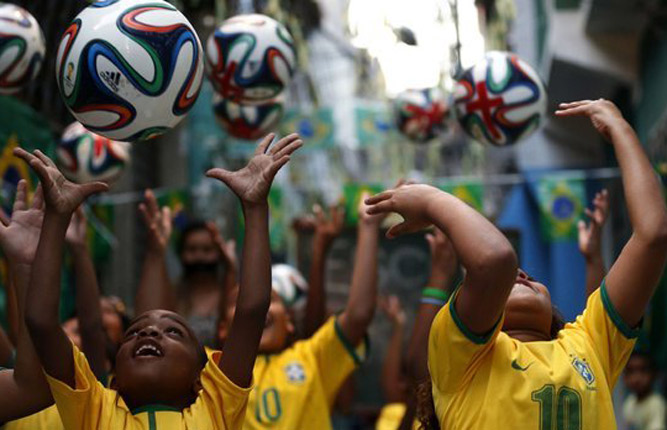
|


